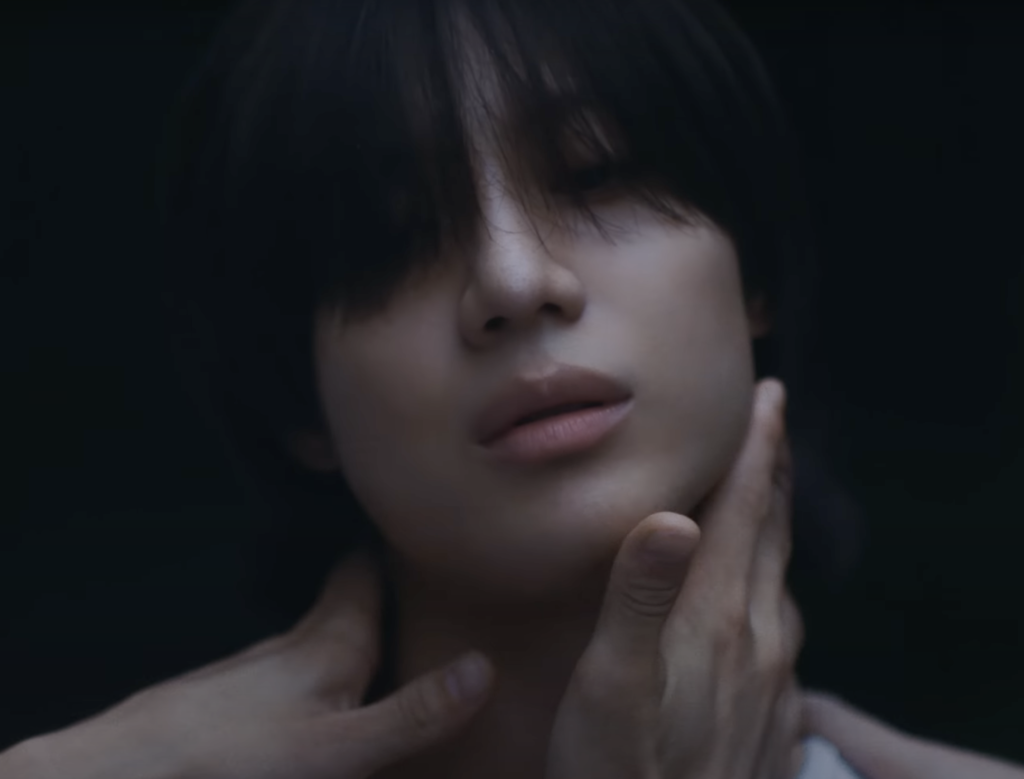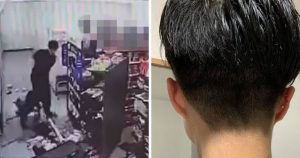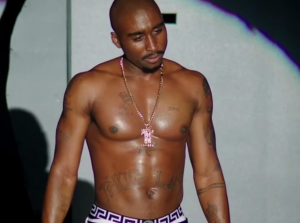Taemin‘s “Guilty” signals his return to solo music after a more than two years’ hiatus due to military service. Speaking about his approach to the comeback on the show Suchwita, he said, “You can say it’s a Taemin cliche but something that the people want. I wanted to capture the real me.” In contention for the title track for his 2021 mini-album Advice, “Guilty” is consistent with his pre-enlistment releases, keeping with his dark, sultry, and atmospheric signature style that distinguishes his solo discography from his work with Shinee.
Taemin has described “Guilty” as a “dramatic song that tells a story,” and the 30-piece string orchestra certainly brings drama to the otherwise relatively subdued synth and snare instrumental. As most Taemin title tracks, the performance and music video elevate the song with interpretive choreography, as well as meaningful choices in editing and production design. While “Guilty” feels in line with Taemin’s previous work, he continues to push boundaries, describing this comeback as one where he “walks a tightrope” to see “how far [he] can go”.
Lyrically, “Guilty” is particularly reminiscent of “Criminal,” as both depict toxic relationships, but “Guilty” inverts the dynamic. While the speaker of “Criminal” develops Stockholm Syndrome and beseeches his abuser, “Destroy me more,” “Guilty” adopts the perspective of the perpetrator:
Messing you up, I throw it all away
Gift you once as bait, then I take everything
Make you addicted, you can’t tell pain from love
While the lyrics suggest a seducer who is unrepentant about hurting his lover, the scenes set to the first minute and a half of the song portray Taemin as a haunted person. In the opening shot of the music video, the camera tracks over the floor of a dimly lit room. Clothes are strewn on the floor, and we see Taemin crouched down, his back to the camera.
The video alternates among at least three different timelines, flashing back to memories, as indicated through color grading. In the first verse, Taemin opens various doors, one resulting in a indigo-hued image of two young people sitting on the ground, one tenderly stroking the other’s hair. In another sepia-toned flashback, a young person stands in the middle of a pillow fight in a dormitory. The central figures in these scenes have hair resembling Taemin’s in the video, so they could represent self or other. In any case, the scenes seem to represent innocence that no longer exists in this space.
After he recalls these past moments, Taemin runs outside, burying his face in his hands. As he runs, the camera movement is frenetic, but suddenly stops and cuts to a closeup of Taemin’s face. Hands creep into the frame, and it is unclear whether they are caressing his neck and face, or going to choke him. In the next scene, the point of view becomes more voyeuristic again, filming Taemin’s dancing in long shot from behind, as his hunched over, fitful movements suggest that he is fighting off an unseen tormenter. Meanwhile, Taemin whispers the lyrics “on the vague border between good and bad, my judgment in the final moment,” intimating that this torment is internal.
With its fast-paced editing and dense imagery, watching “Guilty” feels overwhelming, provocative, and unsettling. Its “killing point” choreography, with Taemin putting his hand through his shirt, lifting it to expose his abs, is a gesture that seems sexy. Clutching his own mouth and chin, though, feels reminiscent of the hands moving up his neck and face. As viewers, we are meant to gaze upon his body, perhaps desire him, but also feel complicit in some suffering that he has endured and internalized.
Following the first chorus, we see the source of his distress: in a medical examination room, white-capped, but faceless guards manhandle Taemin’s head and body, sometimes attempting to wrap him in dark cloth, essentially trying to control him and shape him into what they want him to be. The video cuts between these moments in the facility and Taemin’s outdoor interpretive dance, hitting the beats of the snare and syncing with his cadence of “I can walk like this, talk like this, play like this, uh uh uh uh.” On the last “uh,” one of the institution’s staff forces Taemin to kneel, and he holds up his index finger to his chin, seeming to identify himself as guilty.
This moment triggers a shift in the narrative. The second verse begins with a sharp cut and a switch in wardrobe (and in Taemin videos, costume choices are always purposeful). Taemin dons a floor-length denim skirt, continuing the androgyny he has explored in videos like “Move” and “Advice.” He also wears a T-shirt with the word “LIBERTINE,” denoting a person unencumbered by sexual mores. In a series of extreme close-ups, he runs his hand over a shoulder, draws his lips to a cheek, looms over a figure lying in a dorm bed, and lifts up another man’s chin. Given the unclear identities of all the other people so far, it is possible that Taemin is both the person giving and receiving touch.
Taemin also wears a tall white feathered headdress, which the director of the video captioned with “Abraxas” on Instagram. A key figure in the Hermann Hesse novel Demian, Abraxas is a deity combining the “godlike” and “devilish”. Abraxas is also alluded to in a quote that Taemin partially includes in the bio of his personal Instagram account: “The bird is fighting its way out of the egg. The egg is the world. Whoever wishes to be born must destroy a world. The bird is flying to God. The god is named Abraxas.” In “Guilty,” wearing a feathered piece like the bird who has reached Abraxas, Taemin breaks free of restrictions and embraces non-duality.
No longer alone, but with a group of female backup dancers, Taemin’s dancing now feels less like torment, but rather illustrates a person gaining personal power. His vocal performance also conveys his confidence, first delivering fast-paced, rap in a tone just above a whisper, then ascending to the powerful line “Give up, you’re trapped inside me.”
Like the deity he mimics, Taemin starts to amass a following. The dancers form a circle around Taemin as though they are worshipping him, and begin a rampage in the facility shown during the first verse. In one scene, the dancers enter the dormitory, drape themselves on the bunk beds, and pile on top of the men in the white caps. The victims have gained power over their abusers.
Even after exacting revenge, freedom from trauma does not come easily. In the bridge, the video cuts to evocative, disturbing images from the “Guilty” trailer, which is a companion piece to the MV. The trailer depicts Taemin’s indoctrination by an oppressive institution (though which one remains open to interpretation). In one harrowing moment, young Taemin is forced to shoot a gun, as he gouges his nails into his own thigh as a coping mechanism. Unlike his earlier flashbacks to childhood in the MV, these images are in fully saturated color, suggesting they have a grip on Taemin, as well as on the audience. At the end of the bridge, however, as Taemin belts out the climactic line “every time every time every time,” he lifts his eyes to gaze at the camera for the first time. He appears ready to confront the past, directly and honestly.
From here, the video becomes even more dramatic and intense, set to swelling strings and Taemin’s powerful ad-libs, which are some of his best vocal work to date. The video depicts a riot in which the area is set ablaze, also reflected in the warm and fiery color palette and in Taemin’s new costume, resembling burns. In the video’s ambiguous coda, Taemin finds himself draped over the hood of a car burning on the inside. He stumbles away alone, perhaps reborn as a new self, or perhaps still working through his trauma.
“Guilty” takes viewers through a journey through the corruption of innocence, through trauma and its effects. He is interested in exploring the complexities of the human experience, complicating what we may simplify into binary. In this video alone, he owns his androgyny, adopts the perspectives of abused and abuser, and accepts both pleasure and pain. At times, the video’s point of view implicates us and makes us feel guilty for witnessing and even actively enjoying what we see. In an interview with NME, Taemin said, “although positive words have power, I think it’s more attractive to make the negative look beautiful.” Through embracing the shadow sides of humanity, Taemin remains an inimitable artist.
(YouTube [1] [2] [3]. Luxury Magazine. Instagram [1] [2]. NME. Lyrics via Youtube. Images via SM Entertainment).




